Items
Tag is exactly
perspective
-
 2020-04-01
2020-04-01Coronavirus Journal: April 2020
The essay is composed of entries from my daily journal during the month of April 2020, at the beginning of the pandemic quarantine. It shares the perspective of my partner and me, retired senior citizens in Up North Michigan. -
 2020-06-17
2020-06-17A Case of a Different Perspective
Youth, Students, Perspective -
 2022-04-26
2022-04-26The Digital World and COVID-19
The pandemic caught us all by surprise. At the end of the year 2019, a global event started that none of us were prepared to confront. A new, unknown virus was killing people all over the world, and it was making its way to the United States. As we prepared in whatever way we could, with what we knew at the time, the world started to shut down. Local mandates were advising us all to stay at home and to only leave if we needed to get necessities. With this, we all had to rely on technology to stay connected and to know what was happening in the outside world. We were all connecting through various platforms to work from home, attend classes, or simply to talk to our loved ones. The comfort of doing everything from home turned into a personal prison for many that were not used to being isolated. As the days turned into weeks, and the weeks turned into months, people were anxious and desperate for a sense of normalcy. With technology, we also got information and found resources that would help us navigate through this pandemic, and at the same time, we received misinformation that would eventually turn deadly for many. There was a huge focus by certain political parties to diminish the severity of the virus. In the United States, the conservative population (lead by former President Trump) believed that the virus was not dangerous, and they kept comparing it to a common flu. This conservative population was asking the rest of the population to not believe what the media was informing at the time. This created different perspectives linked to conspiracy theories that spread quickly through different social media platforms. For example: like COVID-19 being a production of the government to control the population, or simply that the virus did not exist at all. At this point, there was a huge part of the population that did not trust the guidance provided by local health authorities. There was information regarding a vaccine that could minimize the damage caused by the virus, and this was great news! Unfortunately, the vaccine encountered the same type of resistance that the previous prevention guidelines encountered. People did not believe in the effectiveness of the vaccine, and again, theories regarding the development of the vaccine started making their way through the internet. For example, some people believe that the vaccine is a chip implanted in our bodies so that the government can track us. In times of uncertainty, those who practice religion tend to turn to religion for comfort and guidance. In some cases, certain religious groups were advising their congregations to put all their trust in God, and that he would protect them from the virus, without the need of a vaccine. The clash of religion and science made it more difficult for the population to come out victorious from a very challenging time. More than 2 years later, and we are still seeing the effects of the pandemic in society. There is an emotional divide that lingers in our communities, not just a physical distance. Communities want to have their normal lives back but fail to realize that these are their normal lives now. -
 2022-04-15
2022-04-15Pending Doom…
The pandemic was a very lonely time for us all, some may have felt as though they were pending doom. -
 2022-03-15
2022-03-15Passionate and (mostly) respectful recent debate in the waning pandemic
While the all-encompassing strength of the COVID-19 Pandemic is waning, it still persists and lingers. This is a critical time where countries can either dreamily and abruptly attempt to return to idealized pre-pandemic existence or continue to return to their visions of normalcy through steps found in scientific methodology. Debates that focused on safety, health, and personal freedoms (especially about masks and vaccines) were constantly in the news the last two years, with some deteriorating into disheartening and embarrassing public displays. Surely, these debates will continue indefinitely, and all perspectives will be important to history. While browsing this archive, many of the stories are of those who subscribe to the reality of the pandemic, who trust and listen to science, and who have highlighted the way their lives have changed during the pandemic. I am from Arizona, born and raised. I often find myself to be the lone liberal or democrat, particularly at work, in a state formerly known as a red state, now perhaps purple. While Arizona is well represented in this archive regarding life during a pandemic, it has many people living in it who dispute the pandemic's origin, virulence, and the government's attempt to control personal freedoms, as much as I personally disagree. The attached YouTube video shows a meeting of the Kyrene School District Governing Board from January 25th, 2022. The relevant background is that before the 2021 Winter Holiday break this district emailed parents that masks would no longer be mandatory after the new year. By the end of the break, Omicron infections had increased, and the district regressed back to mandatory masks after the holidays. Please watch, specifically from minutes 20:35 through 38:28. To me, a person who reads a diverse group of news sites daily, this clip has brought me hope. Of all the ugly comments I have read on far right or left news sites, debate like the one in this video is instead mostly constructive, passionate, and respectful. I may not agree with everything discussed in this sample, but I respect people's right to debate their beliefs. I believe studying other perspectives is useful for future generations. Historians one hundred years from now may wonder why certain people thought masks were useless in schools. Hopefully, between this J.O.T.P.Y. archive and the articles that exist on the internet, a thoughtful sample of diverse perspectives can be researched. Additionally, I hope this video adds to material in this archive that demonstrates the anti-mask perspective to historians who could research and educate future generations on state and federal authority during health crises to hopefully prevent conflicts as we saw during the COVID-19 pandemic. This video is owned and uploaded by the Kyrene School District to YouTube. -
 09/28/2020
09/28/2020Justin Sears-Watson Oral History, 2020/09/28
C19OH -
 2021-12-09
2021-12-09Isabel Vara and Grace Griffin Oral History, 2021/12/09
The audios I have uploaded share different perspectives on Covid-19 after learning about past pandemics -
 2021-10-08
2021-10-08my Quarantined life
My Name is Alex Clayton and I go to lone star Middle School, and I am a basketball player for the Idaho Stags. It started as a news report saying a cruise ship arrived in the U.S with diseased passengers and I did not think anything big about it, so I let It go. A few months later everything shut down out m of nowhere and school, restaurants, movie theatres, just anything public that is a company shut down or was close to that. Eventually things started to die down and things opened back up, but you would get your temperature checked and be wearing a mask everywhere. Life was never the same for like two years. (This was all my perspective) -Alex Clayton -
 2020-06
2020-06Pandemic Protests
These images from June 2020 were captured during Black Lives Matter (BLM) protests in New York City following the killing of George Floyd. The first image shows City Hall the morning after BLM protests. In this image of a landmark building covered in spray painted cries for change, graffiti depicts the frustrations over the cruel injustices institutions place on people of color. The second image depicts one of many protests during summer in quarantine when New Yorkers came together on avenues, bridges, and squares. Citizens marched and chanted as police followed alongside to ensure protests remained peaceful. These images capture uniquely complex dynamics when people were forced to pursue creative avenues, reinventing social justice movements to come. My time in quarantine was not solely spent on COVID related activities, I also educated myself on how and why many US institutions remain racist, discovering ways that structural change can address unjust attitudes. I read articles written by advocates for the BLM movement and also by conservatives opposing it. In exposing myself to differing mindsets, I was better prepared to engage in conversations with others opposed to change in the hope of educating them on the pressing need for progress. Furthermore, my high school friends and I frequently Zoomed to discuss how our alma mater contributes to racism in both subtle and overt ways. These conversations allowed us to work with fellow alumni, as well as current students, to create a document clearly listing racial inequities within the student body, the faculty, and the curriculum. For each issue that we highlighted, we provided multiple alternatives for how the school could fix the matter in question. While these conversations were unexpected before the BLM protests occurred, they became productive and fulfilling conversations that in and of themselves began to address long held biases, racist representations and undercurrents of injustice within our alma mater’s community and programs. -
 2020-04-16
2020-04-16The Diary of a Broken High School Senior
I was a member of the class of 2020 at what I believe is the most incredible school imaginable. Perhaps after thirteen years I am far from unbiased, but the sense of community offered by my beautiful, 1,200 student Pre-K through 12th grade school is unmatched. Now, envision a girl who walked this campus with her childhood best friends, siblings, and cousins, and, rather frequently, her mother who made an effort to lead the Parents Association countless years. Overlay a history of homesickness and a global pandemic, and the product is March 2020 me when this blissful chapter of my life was abruptly ripped away, propelling me prematurely towards college at a school I had already decided could never fill the shoes of my high school. This tear stained entry was written on April 16th, when my state governor officially shut down all schools for the remainder of the school year. I had spent the last four weeks with a countdown on my iPhone tracking the days until I could return to school. The countdown had to be adjusted at one point when “coronacation” was extended from one to three weeks. Yet I remained the voice of naive optimism, unwilling to entertain the unfortunate reality that everyone around me had already accepted. This may seem dramatic and theatrical. But this same optimist in me hopes that, should anyone stumble upon my story, they will “respect what [they] cannot know” (Saidiya Hartman). There is much more to this story and my history than could ever be relayed to another person. But with the right lens, great value can be extracted from every story, no matter how many dried tears dot its pages. Hartman, Saidiya. "Venus in Two Acts." Small Axe, vol. 12 no. 2, 2008, p. 1-14. Project MUSE muse.jhu.edu/article/241115. -
 2021-05-09
2021-05-09Theatre Workshop presents: The Essential Bronx - COVID Stories, Part 2
We have preserved in this short film a selection of Theatre Workshop students' authentic experiences during the COVID-19 pandemic and we want to share these stories with you. -
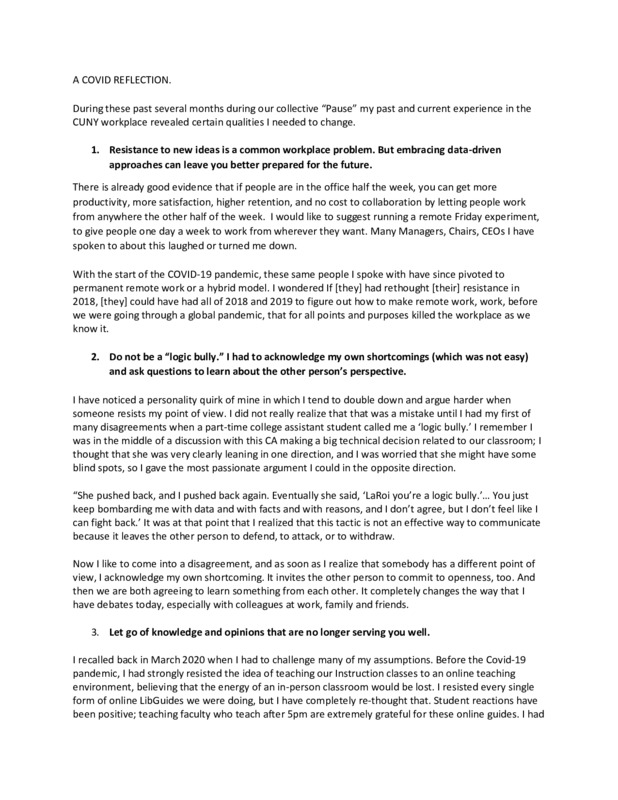 2021-05-18
2021-05-18A COVID 19 Reflection
Observations and lessons learned and learning during this Pandemic. -
 2020-04-12
2020-04-12One Way to See Family During a Worldwide Crisis
Primary Source Essay Wildania Hernandez The primary source I’m using for this project is a picture of my family on a zoom call celebrating my father’s birthday on march 12, 2020. This is how my family and myself had to gather together to actually spend some time since the virus started. Our family is a very united family, we are very close and before COVID-19 started we used to get together in somebody’s house and just cook and dance and talk, and enjoy every second of it but everything changed when the virus started it was spreading too fast, and everybody was scared. I remember how my mom was always watching the news and you could see all the videos of all those people that died in Queens and they had so many bodies that they didn't have a place to put them. Funeral homes were full and all I could think was about those families who lost a loved one and how some people were thinking that COVID was fake. The first time we use zoom was to celebrate my father’s birthday, it was something new and not something like we usually do but at least we got to see some of our family members. We were always home since we stopped working because of the pandemic. We used to work for a medical transportation company so we were “Essentials Workers”, we transport people to get dialysis treatment 3 times a week and after the virus started to get stronger we had to stop working because almost every patient we transported died of COVID-19 before the wave of summer even started. Sadly the COVID ended the life of two members in my family, at the end of June we got the news that one of my aunts was at the hospital on life support, three weeks later one of my uncle was in the same situation. We couldn't see them or say goodbye, everything just happened so fast that we were in shock and this is how we started our “Weekly zoom meetings”. The reason why I selected this source is because I want to show historians of the future how families use to communicate in a group without getting together. We used this tool to so much that we had an schedule, every Friday we had a zoom meeting to just talk about our week. To talk about our different point of view of the pandemic and not only that but all of the events that happened last year, like the protest that started shortly after George Floyd was killed, and the election in November but most importantly those zoom meetings was just to make sure that everybody was good and to support each other since some of my family members were still working outside. Crazy how everything started last year and now we have a vaccine and hopefully everything will go back to normal in no time but for now we need to live with the memory of what started in the year 2020 that affected the whole world. -
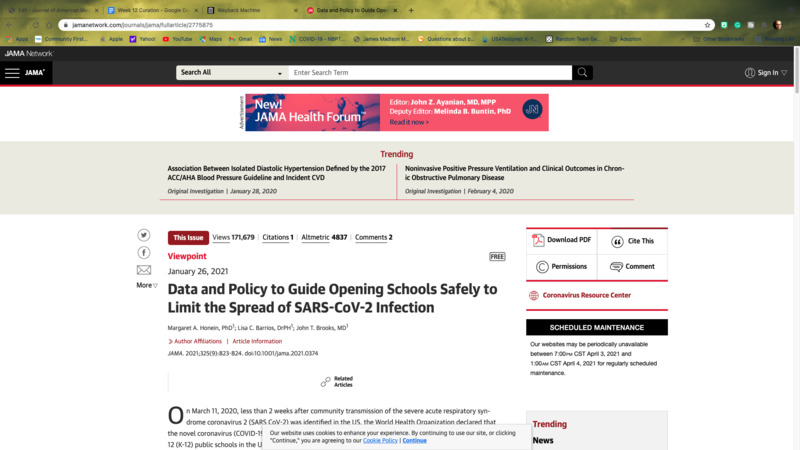 2021-01-26
2021-01-26Journal of American Medical Association Data and Policy for School Opening
The article references numerous case studies and research which suggest that transmission between students should not be a determining factor in postponing in-person instruction. External factors (i.e. local communities) are analysis in the article to offer another perspective about the dangers of students in the classroom. The article does provide recommendations to mitigate the spread of the virus between students, teachers, and staff. -
 2021-02-27
2021-02-27Phoenix Zoo & black history month
This is a Facebook post made by the Phoenix Zoo. In this post the Phoenix Zoo interviewed an African American zookeeper, specifically for the elephants, on her life journey becoming a keeper. It shows that black history month is important to the Phoenix Zoo and gives a different perspective on this occasion. -
 2020-12-02
2020-12-02Theatre Workshop presents: The Essential Bronx - COVID Stories, Part 1
We have preserved in this short film a selection of Theatre Workshop students' authentic experiences during the COVID-19 pandemic and we want to share these stories with you. -
 2021-02-07
2021-02-07Nature Endures
This photograph shows the imposing Catalina Mountains (Babad Do'ag to the indigenous Tohono O’odham) to the north of Tucson, Arizona, USA, with a majestic saguaro in the center front. The rocks in these mountains record millions of years of history. The multi-armed saguaro has stood for at least 75 years. Viewing these natural phenomena has always been a favorite pastime of mine, but during this time of pandemic, contemplating these forces of nature reminds me of the endurance of nature and the long stretch of environmental history. The pandemic and our current difficulties will pass just as other the saguaro and the mountains have seen many other calamities pass. -
 2020-06-19
2020-06-19The Dangerous Luxury of Claiming You've Rejected Society
Early in the pandemic, a man I knew died of Covid-19 in an overwhelmed hospital. I kept thinking he might not have died if the hospital had been better funded. Then I remembered he had once insisted to me that he lived outside society. I saw a sad connection: hospitals and public health in general were underfunded because too many people felt they did not share a common society with others. More thoughts about Covid and community started flooding my mind. Eventually I pulled these thoughts together in a short essay. -
2020-02
Year 2020
February 2020. Football season is over. The Kanas City Chiefs just won the super bowl. People are still gathering for parties and get-togethers. I turn on the news - The first thing I saw on the screen was "Corona Virus". I had no idea what that meant. I disregarded it as something irrelevant to the world, but I was dead wrong. I went to school the next day (I'm in 7th grade at the time), and I keep hearing students whispering, "corona virus". At this point I knew something wasn't right. About a month later, I'm sitting in the car, in the driveway with my dad. At this point, I know that the corona virus came from China. I know that it's death rate is very very low, yet people are very very worried. I also know that for me, things are completely normal. I did not know however, that things were about to change. On the radio, I heard the voice of the LA county mayor, "I am issuing a mandatory stay-at-home order. Do not leave your house until further notice." I will never forget the events that took place in year 2020. -
2020-03-24
Perspective of how I see covid
So when this whole thing started people knew what it was but no one really thought of it. Nothing really changed besides that people started to use sanitizer and things like that to stay clean. After a while there were rumors that things were going to close down. Then those rumors became true, school started to go online and everything started to close down. People were buying toilet paper and necessities and it was hard to find those things in any stores, masks were mandated and everything was closed and we were on a mandatory lockdown. I am a person that loves going to restaurants and taking out food just wasn't good, so i was trying to make food a lot at my house and I have almost burnt down my house multiple times. Life was really boring and you couldn’t see friends or family. U would facetime with relatives and friends all the time because of this. That is basically what happened from my perspective of the pandemic. -
 12/08/2020
12/08/2020Erika Knox Oral History, 2020/12/08
We discussed our view on the COVID-19 pandemic after taking a semester-long history course on the history of global pandemics. -
 2020-11-19
2020-11-19The "New Normal"
The submission of this photo is to show the “new normal” while driving around. Thinking back to the year 2019, if I saw someone with a mask hanging on their rearview mirror I would have been slightly confused and intrigued as to why. However, in 2020, many have begun to hang masks on their rearview mirrors as it is a convenient spot. COVID-19 has had some of the biggest impacts on society, with masks being close to the top. Ever since the mask mandates went into effect, a mask being hung on a rearview mirror became a regular occurrence while traveling. Currently, there is a statewide mandate in Massachusetts enforcing the wearing of masks in all public spaces. Although it is still odd or awkward to some, mask wearing is the current way of life and there is no way around it. Even though there is opposition to wearing masks and they hinder the feel of real conversation, the safety provided by the mask outweighs it. My hopes are that the mask can help in the present so we can return to the “old norm” in the future. -
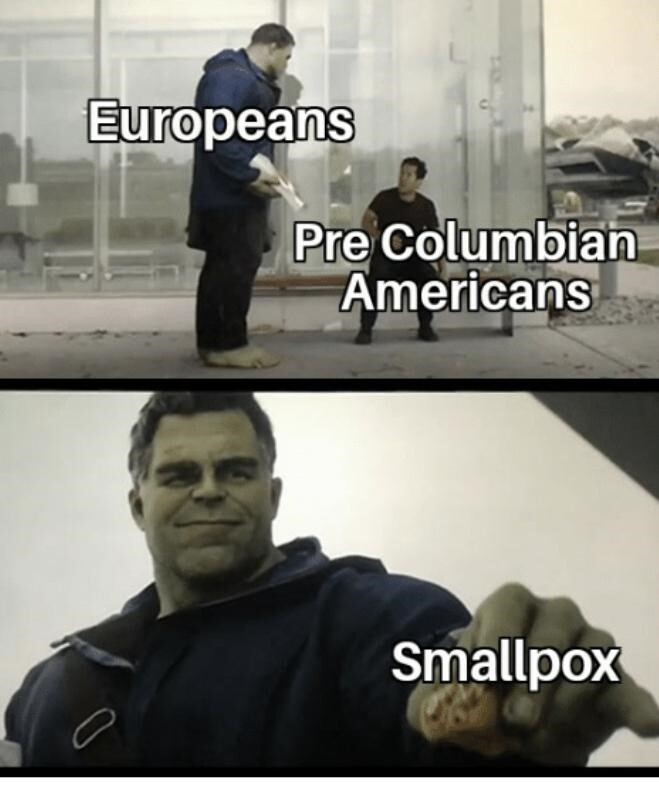 2020-12-06
2020-12-06Memes relating to today
I wrote this essay for my History 103 class at Niagara University for my final exam -
 2020-10-03
2020-10-03Dating During the Pandemic
Being under an extreme amount of stress from trying to switch to online school or working from home fulltime, you were under more stress if you were in a relationship. If you lived with your significant other, it started off amazing. You finally got to spend more quality time and try new things. But soon after it started to take a toll on the relationship by being with only them for four months straight and not seeing other people. On the other hand, if you and your significant other did live together, the beginning was the hardest. You had no idea when you were going to see them next and your relationship mostly consisted of Facetimes. As time went on it became the new norm of dating and seeing each other in person became a once-in-a-lifetime moment. No matter what situation you were in, it really pushed your relationship to the next level. -
 2019-12-16
2019-12-16A Pandemic Birthday
With the outbreak of COVID-19 you never really understood how much it was going to change things. Everyone assumed we were going to be locked down for a couple of weeks then it will all be over. Now, it has been eight months and we are still under strict rules. One thing that we all took for granted was our birthdays. The younger kids did not understand why they could not have their friends over and the elderly were terrified to even leave their houses because they are more prone to catching COVID-19. So, the only people you could celebrate with were the people you were locked down with and depending when your birthday was, you were really not too fond of those people. Thankfully, someone came up with the idea of a drive by parade. That is when everyone jazzed up their cars with balloons and signs and drove by your house screaming “happy birthday,” making your day a little bit better. -
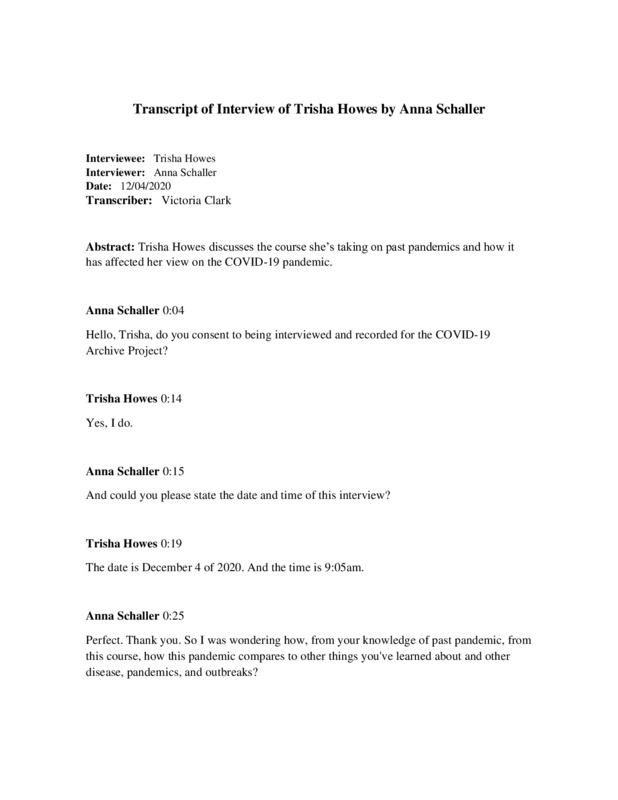 12/04/2020
12/04/2020Trisha Howes Oral History, 2020/12/02
This is an interview with Trisha Howes, a student in university. -
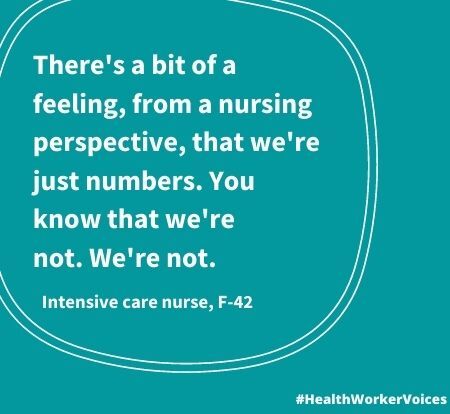 2020-06-08
2020-06-08Australian Health Worker quote on not being valued
There's a bit of a feeling, from a nursing perspective, that we're just numbers. You know that we're not. We're not. Quote from Female aged 42, Intensive Care Nurse. Image created by the Health Worker Voices project: https://mspgh.unimelb.edu.au/healthworkervoices -
2020-11-30
The year things changes
before covid my life was pretty normal i drove to school and work. i was usually a person who was somewhat athletic but not completely. but assoon as covid hit i started to realizes a change. this change was in my travel habits. i used to drive to places with other or be with crowedroom of people but due to covid i had to rethink my ways of tranportation. and that is where biking became a new hobby and mode of transportation. with biking i was able to keep my distance and not be near people in large groups. as i picked up biking i discover i was having more fun and was a lot happier. biking suddenly gave me the chance to see the would in a slower view and i could focus more on that. with al the horrible thing happening this year i was able to escape it almost by biking and at the same time be safe. biking gave me a new view of the would and a new mind set of taking thing slower not rushing. now i biking nearly every where I go and I enjoy it and it has giving me a new activity to due during covid. -
 2020-05-09
2020-05-09My Story with Coronavirus
The story I wrote is about my perception of the beginning of the pandemic and what I learned after going to CVS to buy a card for mother's day. -
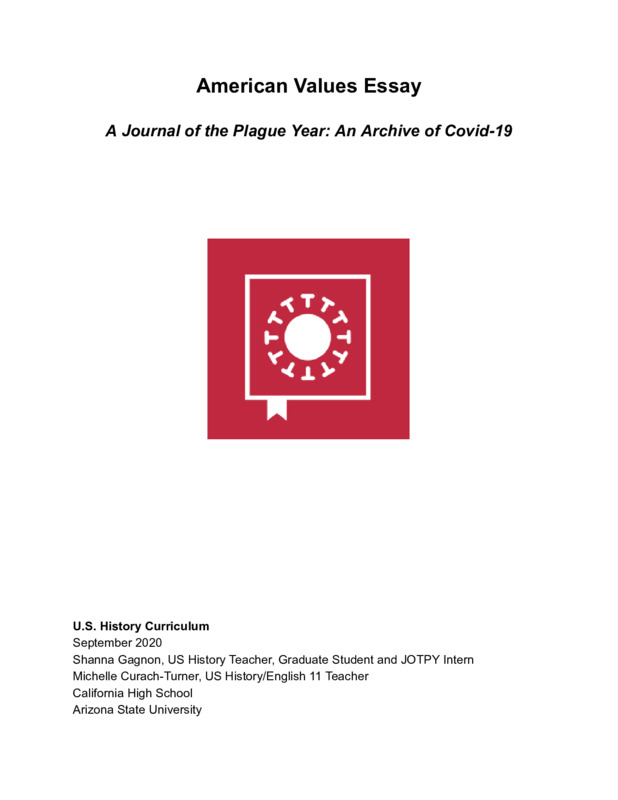 2020-09-07
2020-09-07American Values Essay, Lesson Plan
This curriculum was designed for a junior level US History course. Students are asked to identify core American values and to formulate a claim in response to the essential question, "Is America currently living up to its core values?" The curriculum and student essays are being submitted to the JOTPY archive to provide a picture of how teenagers view America as a whole in 2020. They also give insight into the vast array of perspectives teenagers living during the COVID-19 pandemic have based on the diversity of their current life experiences. -
 2020-04-26T13:34:00
2020-04-26T13:34:00Fake Images
This Article shows how Mainstream news sources (for example CNN or FOX) can show its viewers misleading photos. During this Pandemic it is very important to get the full story of everything that goes on across the country involving Covid-19. This causes these images do more harm than good, when educating viewers on Covid-19. I feel it is important to stop the spread fake news, especially when a deadly virus is involved. -
 2020-08-10
2020-08-10"Recalibration"
I wasn't quite sure what to do at first, and it was almost like I'd forgotten how much I loved writing. How I love the way I dress up words and the cathartic experience of just letting what is in your brain be seen. Having a guest for the mental dialogue makes me feel seen. -
 2020
2020The Coronavirus Diaries: An account of the coronavirus 2020 pandemic from the perspective of a 14 year old
This was the perspective of the coronavirus at the beginning from a younger unbiased person. -
 2020-05-20T20:00:00
2020-05-20T20:00:00Even though there is so much going on around us the world can still show its beauty.
Even though there is so much happening in this world there is still something beautiful about it. -
 2020-05-27
2020-05-27Life as a Quaren-teen: Jacquelyn's Coronavirus Files
It provides a full, comprehensive view of the COVID-19 pandemic in Carroll County, MD, including multiple perspectives on the pandemic. This allows it to tell more than just one story and hear the voices of many in the community. -
2020-05-26
Student Advice
Advice given to fellow students. -
 2020-04-24
2020-04-24#26: Silenced
The title of this image specifically refers to the mask-ridden culture we are currently liviing in to contain the virus. It also refers to the 'silencing' of one's human/personal interactions, one's voice; one's community. In this isolation, the individual's pain and suffering become evident - not just for live's lost, people sickened, but loss of the 'normal'. www.niloumakes.com @niloumooch -
 2020-04-15
2020-04-15NYT Story on the COVID 19 Archive
Sherri Denney was in the fourth day of quarantine in her home in Springboro, Ohio, when she thought about the toll the coronavirus was taking. She sat in her recliner chair and cried as the state’s governor checked off the number of dead and sickened, knowing there would be more the next day. Overwhelmed, Ms. Denney, 55, tried to put her feelings into words. “Wow,” she began writing on an old sketch pad, quickly realizing the precise words would not come easy. “That’s all I can say. My emotions are ranging from sadness to fear to anger.” The week before, a woman in Nevada turned to her own version of journaling. Mimi J. Premo recorded a video on her cellphone, giving voice to a kind of stunned weariness so many Americans are feeling. And in Indianapolis, in an interview recorded by two university research assistants, a man who is diabetic and H.I.V. positive talked about how the speed and unclear ways of transmission “freaks me out.” The three accounts, snapshots of intimate moments during the pandemic, are a response to a call from historians and archivists across the country to document this extraordinary moment in history. Universities, archives and historical societies, ranging from the Smithsonian’s National Museum of American History to a tiny college radio station in Pennsylvania, are rushing to collect and curate the personal accounts of how people are experiencing this sprawling public health crisis as told in letters and journals, audio and video oral histories, and on social media. They are inviting people such as Ms. Denney and Ms. Premo to share stories and material from the 2020 coronavirus and its aftermath in real time. The idea is to bridge communal history and offer a fully realized look at the outbreak that can help the public, researchers and policymakers better understand how the pandemic permeated our lives. ImageA journal entry by Sherri Denney. It was one of the first submissions to the coronavirus public memory project set up by Wright State University. A journal entry by Sherri Denney. It was one of the first submissions to the coronavirus public memory project set up by Wright State University.Credit...Wright State University Whether a somber handwritten journal or an endearing Instagram post, the contributions will offer a look at a nation attacked by a virus coast to coast. The stories document sickness and death. The profound disruption of American rhythms and rituals, evidenced by empty shelves and streets. The gnawing restlessness of sheltering in place. The ways people showed resilience and managed to still find joy. “What we as contributors record is what the future generations will remember,” said Mark Tebeau, one of the project directors of a virtual archive founded at Arizona State University. The team of historians and artists started A Journal of the Plague Year: An Archive of Covid-19 on March 13, two days after the World Health Organization declared the coronavirus a pandemic. The name was inspired by Daniel Defoe’s novel “A Journal of the Plague Year,” which chronicles the bubonic plague in 1665 London through the lens of one man. Latest Updates: Coronavirus Outbreak in the U.S. The California State University system will not hold classes on campuses this fall. Top health experts testify that the U.S. is not ‘out of the woods’ and warn against reopening too fast. Testing becomes a flash point in the Senate hearing. See more updates Updated 9m ago More live coverage: Global Markets New York With the help of graduate students and scholars from about 20 universities, the archive has amassed more than 1,400 entries from 500 contributors across the world, including Australia, Peru and China. Mr. Tebeau, a public and digital historian who heads the university’s public history program, said they are also reaching out to marginalized communities to ensure the project is inclusive. One of the first entries came from Ms. Premo, 36, a customer service representative who lives near Las Vegas. She had not left her home for nearly a week in mid-March when she submitted the video. In the clip, just over two minutes, she wonders who might be stricken with Covid-19 next. A neighbor? A friend? A family member? “No matter how many Skype meetings I have, no matter how much I am on Facebook, no matter how much I write in my journal and try to laugh through the tears, it feels so different,” Ms. Premo said. “Living with this uncertainty is,” she added, pausing in the video, “it’s unsettling but I feel that no matter what happens, I guess it’s hope that keeps my spirits up.” Video Mimi J. Premo shared her thoughts in a video diary to Arizona State University. Last week, the Library of Congress received its first Covid-19 collection: street scenes from New York, New Jersey and California by the photographer Camilo Jose Vergara. In addition to documenting stay-at-home life, mask styles, health care workers, the economic impact and how people are helping one another. The Library of Congress is also collecting web content, data and maps. The Smithsonian’s National Museum of American History deployed a Rapid Response Collecting Task Force to chronicle the pandemic. “Museum staff is working to formulate a plan that achieves a balance between the urgency to document the ephemeral aspects of the historic turning points as they happen,” the museum said in a statement, “and the need to provide a long-term historical perspective.” In response to the pandemic shutdown, StoryCorps, the story-sharing nonprofit, moved its platform online for the first time. Interviews that used to be recorded in a physical studio can now be done using video conference technology. The audio and a photo from each interview will be preserved in the StoryCorps Archive and with the Library of Congress. And students at Neumann University in Pennsylvania set up a series called the Coronavirus Diaries on the school’s radio station, WNUW-FM. Listeners record themselves sharing pandemic stories using a voice memo app or by leaving a phone message at the station. The diaries air hourly. Local archives are also calling for oral histories and materials. The Atlanta History Center, for example, is asking the city’s residents for digital files and physical artifacts (the latter would be collected once the center reopens). The project, called Corona Collective, lays out how seemingly mundane items — a no-frills furlough notice, a handmade banner thanking emergency medical workers — help tell the story of how daily life in Atlanta changed. Image “Goodbye,” a drawing submitted to “A Journal of the Plague Year,” an archive of the coronavirus pandemic created by Arizona State University. “Goodbye,” a drawing submitted to “A Journal of the Plague Year,” an archive of the coronavirus pandemic created by Arizona State University.Credit...Jeffrey M. Davis Similar efforts are cropping up in big cities and small towns. Sometime during spring break in March, Jason Kelly, a professor at the Indianapolis campus of Indiana University, realized the coronavirus was likely to be the defining event for generations. For a professor who teaches digital public history, it meant something else, too: How people experienced the outbreak needed to be captured and organized in a searchable database. That was the seed of what is now the Covid-19 Oral History Project, based at the Arts and Humanities Institute on the Indianapolis campus. Mr. Kelly turned to the 19 graduate students in his digital public history class and asked if they would put other coursework on hold to focus on the project, which uses “rapid response collecting” for Covid-19 lived experiences. Eventually the project will merge with the larger Plague archive Such efforts to collect memories in real time was also used by groups after the Sept. 11 attacks, Hurricane Katrina and the Pulse nightclub massacre. The page from Ms. Denney’s diary became one of the first submissions to the coronavirus public memory project set up by Wright State University. “All of a sudden the pandemic was right here and personal,” said Dawne Dewey, head of special collections and archives at the university. “We put the call out because we need stories to help future generations understand this moment in history.” The archive, partly housed on the fourth floor of the school library, includes the journals of survivors of the 1918 flu pandemic. One was written by Donald McKinney Wallace, a farmer who served in the Army. Mr. McKinney was sickened with the flu in the fall of 1918. He was quarantined in barracks, separated from others by blankets hung from a wire. He wrote about the daily meal of soft boiled eggs and cold toast, feeling weak, a stubborn fever, isolation and the deaths of fellow soldiers — an account that could have been written today. “A century ago, people told their stories in written journals,” said Ms. Dewey. “Now, we are capturing people’s thoughts and experiences through social media posts, email, audio and photographs.” -
 2020-05-09
2020-05-09Spring Isolation
isolation during spring 2020 -
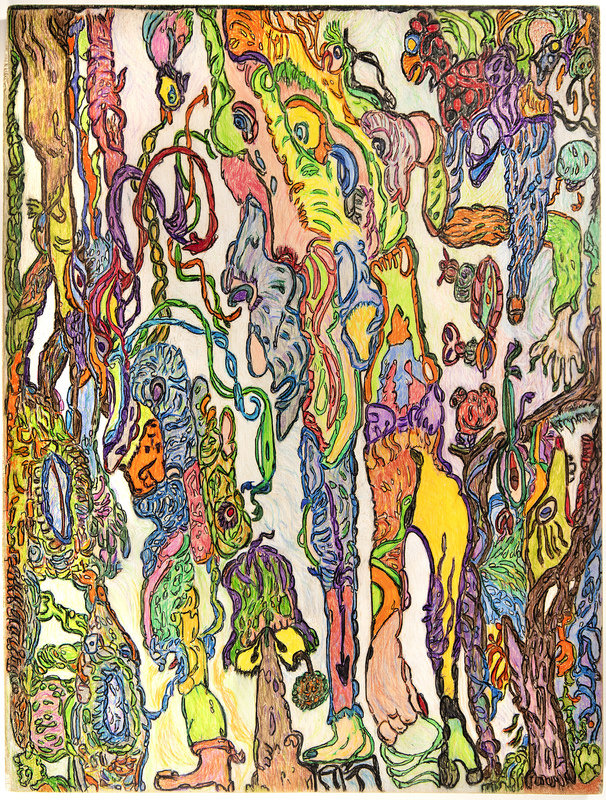 2020-04-14
2020-04-14"Exorcism of a Virus," 2020, colored pencil on wood panel, 9.25'' x 12.25’'
This is an artwork drawn by the outsider artist Margaret Mousseau during the Covid period (March/April 2020). The title "Exorcism of a Virus" is not the only piece to reference current events. A former healthcare worker, now 64, she works from her apartment in Vermont. -
2020-04-23
Dear Future Historians
A personal account of how the pandemic has affected them. -
 2020-04-28
2020-04-28Keeping Perspective
An interaction with someone from Lybia. -
 2020-04-26
2020-04-26Space
This image can mean multiple things. As you can see with the model it is floating and is isolated by a simple background. The negative space represents the social isolation and the model is trying to make the best of the situation. #REL101 -
 2020-04-02
2020-04-02Journal of the Plague Year entry 1- Logan Bellos
You don't ever understand the severity of something until it affects your own life.
